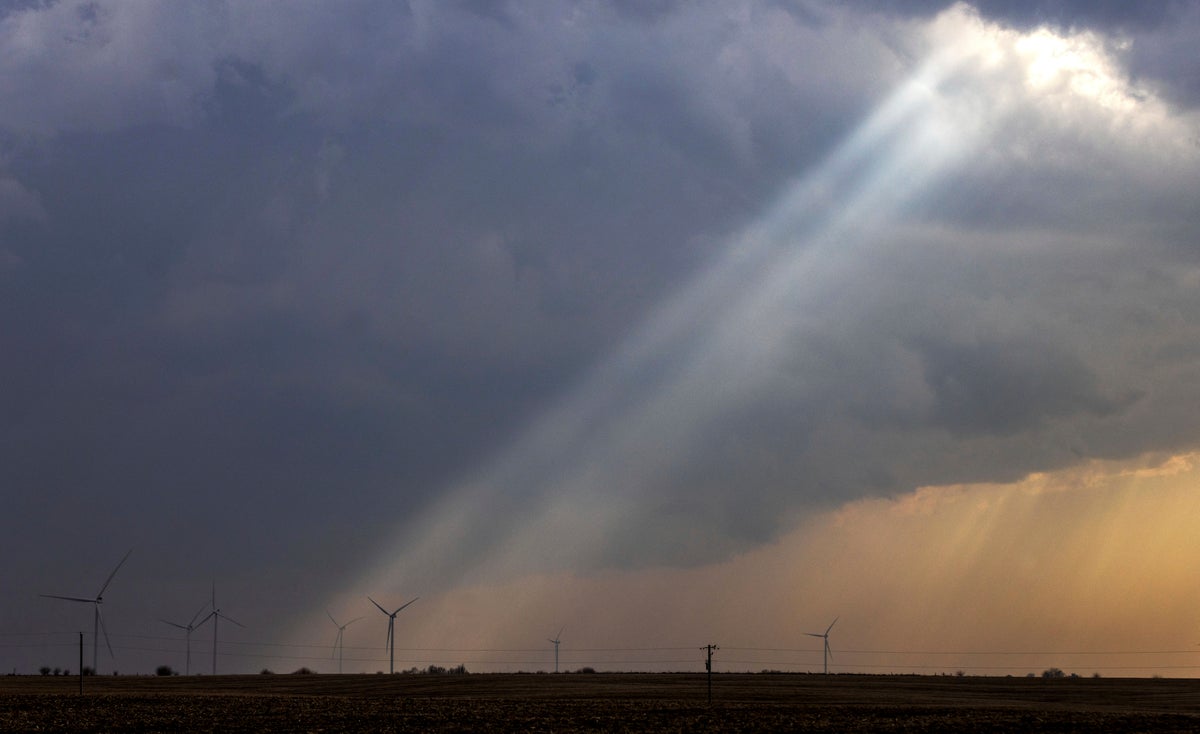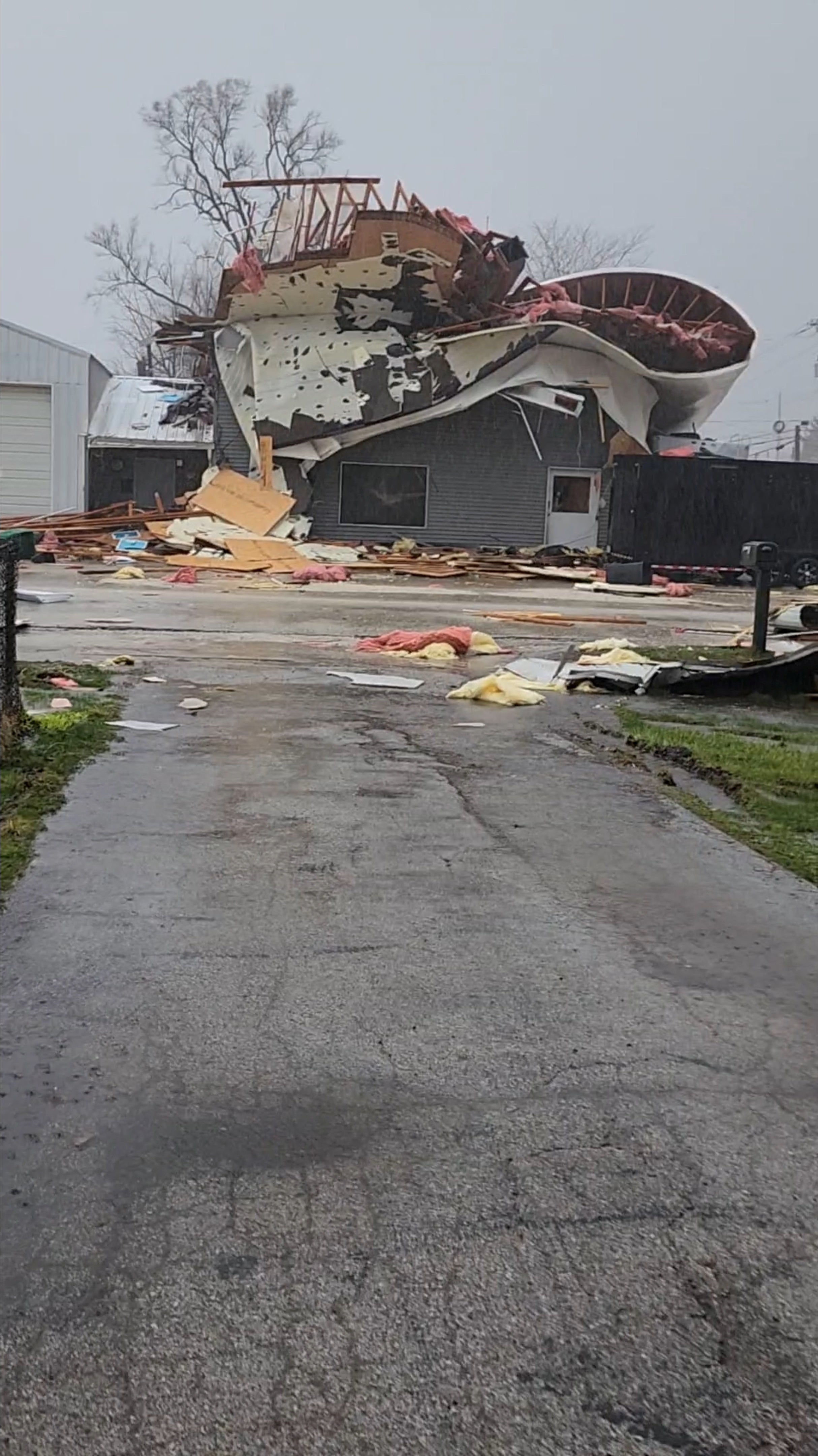
Severe thunderstorms were expected to bring hail, strong winds — and the threat of tornadoes — to parts of the Midwest and South that are reeling from a weekend of deadly weather.
Officials warned residents to have shelter ready on Tuesday night before going to sleep.
At least two tornadoes were confirmed on Tuesday in Illinois as storms targeted the state and eastern Iowa and southwest Wisconsin before nightfall.
Areas of southern Missouri, Arkansas, southwestern Oklahoma and northeastern Texas were most at risk overnight.
“This could be a night to just set up down in the basement to be safe,” Tom Philip, a meteorologist in Davenport, Iowa, said Tuesday.
The National Weather Service issued tornado warnings in Iowa and Illinois on Tuesday evening and said a confirmed twister was spotted southwest of Chicago near Bryant, Illinois. Officials said another tornado touched down Tuesday morning in the western Illinois community of Colona. Local news reports showed wind damage to some businesses there.
The storms were expected to hammer some areas hit by severe weather and possibly dozens of tornadoes just days ago that killed at least 32 people, meaning more misery for those whose homes were destroyed in Arkansas, Iowa and Illinois.
When a tornado hit Little Rock, Arkansas, last Friday, Kimberly Shaw peeked outside to film the storm, then suffered a painful foot injury that required stitches when a glass door behind her shattered and wind nearly sucked her away. With another storm coming, Shaw said she intends to be far more cautious this time and will rush to an underground shelter at her home.

“The original plan was just, ‘If we see a tornado coming, we’ll get in the shelter,’” Shaw said. “But now it’s like you’re not going to see it coming. You’re not going to hear it coming. You just need to get (inside the shelter) as soon as the warning goes out or if you just feel unsafe.”
Earlier Tuesday, strong thunderstorms swept through the Quad Cities area of Iowa and Illinois with winds up to 90 mph (145 kph) and baseball-size hail. No injuries were reported, but trees were downed and some businesses were damaged in Moline, Illinois.
Northern Illinois, from Moline to Chicago, saw 75-80 mph (120-128 kph) winds and hail 2 to 3 inches (5 to 8 centimeters) in diameter Tuesday afternoon, National Weather Service meteorologist Scott Baker said. The agency received reports of semitrucks tipped over by winds in Lee County, about 95 miles (153 km) west of Chicago.
The Storm Prediction Center said severe storms could produce strong tornadoes and large hail Wednesday across eastern Illinois and lower Michigan and in the Ohio Valley, including Indiana and Ohio. The weather threat extends southwestward across parts of Kentucky, Missouri, Tennessee and Arkansas. Farther south and west, fire danger remained high.
The fierce storms that started Friday and continued into the weekend spawned deadly tornadoes in 11 states as the system plodded through Arkansas and onto the South, Midwest and Northeast.
The same conditions that fueled those storms — an area of low pressure combined with strong southerly winds — were setting up the severe weather Tuesday into early Wednesday, said Ryan Bunker, a meteorologist with the National Weather Center in Norman, Oklahoma.
Those conditions, which typically include dry air from the West going up over the Rockies and crashing into warm, moist air from the Gulf of Mexico, are what make the U.S. so prone to tornadoes and other severe storms.
Dramatic temperature changes were expected, with Tuesday highs of 74 F (23 C) in Des Moines and 86 F (30 C) in Kansas City plunging overnight to 40 F (4 C) or colder overnight. In Little Rock, Arkansas, Tuesday’s high of 89 F (32 C) tied the record for the date set in 1880.
A blizzard warning was in effect for nearly all of North Dakota and most of South Dakota through at least Wednesday night. In Minnesota, a winter storm warning was in effect in the north.
Fire danger persisted across portions of far western Oklahoma, the Texas Panhandle, northeastern New Mexico and far southeastern Colorado, with low humidity, dry vegetation and high wind gusts. In Oklahoma, officials urged some residents near the town of Weatherford to evacuate because of a wildfire.







